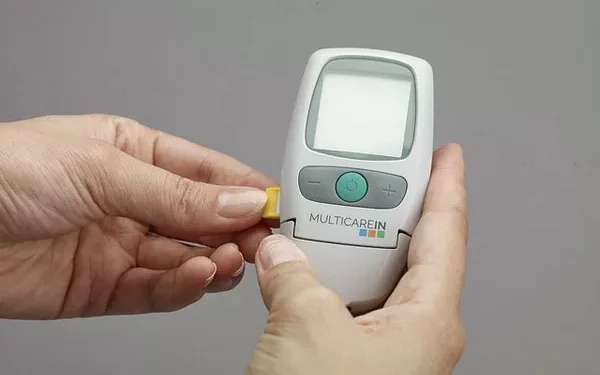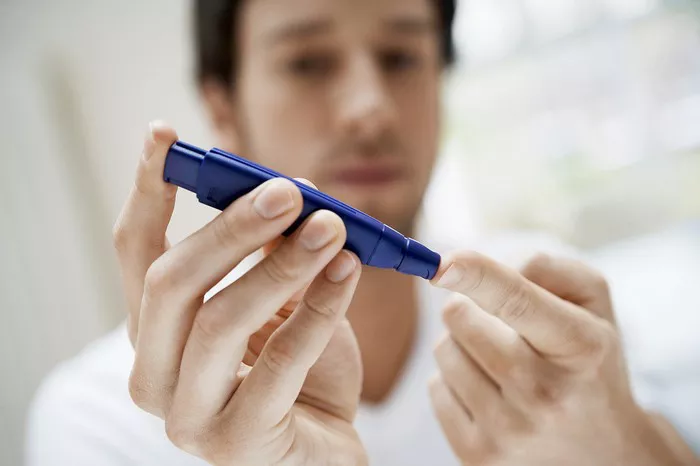Monitoring blood sugar levels is one of the most important tasks for individuals with diabetes. Proper and timely monitoring ensures that blood sugar stays within target ranges, preventing both short-term and long-term complications. However, the question arises: when is the best time to check blood sugar levels?
The answer depends on various factors, including the type of diabetes, the person’s treatment plan, diet, activity level, and other individual considerations. This article explores the optimal times for blood sugar testing, the reasons for testing at specific intervals, and how monitoring can help manage diabetes more effectively. By understanding the timing of blood glucose checks, diabetics can better manage their condition, maintain overall health, and reduce the risk of complications.
Understanding Blood Sugar Levels and Diabetes
Diabetes is a chronic condition characterized by high blood sugar levels (hyperglycemia), which can occur when the body’s ability to produce insulin is impaired (Type 1 diabetes) or when the body becomes resistant to insulin (Type 2 diabetes). Insulin is a hormone that helps cells absorb glucose from the bloodstream for energy. Without adequate insulin, glucose accumulates in the blood, leading to potential health problems.
There are several types of diabetes:
Type 1 Diabetes: This type of diabetes usually develops in childhood or adolescence and occurs when the body’s immune system attacks insulin-producing cells in the pancreas. People with Type 1 diabetes must take insulin for the rest of their lives.
Type 2 Diabetes: More common than Type 1, Type 2 diabetes usually develops in adulthood and is linked to lifestyle factors such as poor diet, obesity, and lack of physical activity. People with Type 2 diabetes may be able to manage their condition through lifestyle changes, medication, and, in some cases, insulin therapy.
Gestational Diabetes: This type of diabetes develops during pregnancy and typically resolves after delivery. However, it can increase the risk of Type 2 diabetes later in life for both the mother and the child.
For all forms of diabetes, blood sugar monitoring is crucial in helping individuals stay on top of their condition, make necessary adjustments to their treatment plans, and prevent complications like cardiovascular disease, nerve damage, and kidney disease.
When to Check Blood Sugar: Key Times
The timing of blood glucose testing varies depending on a person’s treatment regimen and lifestyle. Below are common times to check blood sugar for individuals with diabetes:
Fasting Blood Sugar: First Thing in the Morning
Fasting blood glucose levels are typically measured in the morning after an overnight fast. This is usually the first blood sugar check of the day. Fasting blood sugar provides insight into how well the body is managing glucose levels while at rest and not affected by food intake.
Why it matters: Overnight, the body uses stored glucose for energy, and the liver releases glucose into the bloodstream. In people with diabetes, this release can be uncontrolled, leading to elevated fasting glucose levels.
What to expect: Normal fasting blood sugar levels should generally fall between 70 to 100 mg/dL for non-diabetics. For people with diabetes, the target range may vary, but most healthcare providers recommend keeping fasting levels between 80 and 130 mg/dL.
When to test: Testing should be done immediately after waking up, before eating or drinking anything.
Before Meals: Preprandial Blood Sugar
Checking blood sugar levels before eating meals helps track how well the body is controlling blood sugar throughout the day. These readings give individuals and healthcare providers insight into how the body is responding to the food consumed in the previous meal and the effects of insulin or other medications.
Why it matters: Pre-meal blood sugar readings help determine whether adjustments need to be made to meal plans, medications, or insulin doses.
What to expect: The target range for preprandial blood glucose is typically 80 to 130 mg/dL for most diabetics. A blood sugar level above or below this range may indicate that adjustments to diet or medication are needed.
When to test: Blood sugar should be checked approximately 30 minutes to one hour before meals, depending on your healthcare provider’s advice.
Two Hours After Meals: Postprandial Blood Sugar
Post-meal blood glucose testing, usually taken two hours after eating, provides insight into how well the body is processing the food consumed. It helps determine whether the insulin or medications taken are effectively controlling blood sugar spikes after eating.
Why it matters: After meals, blood sugar naturally rises due to the intake of carbohydrates. Monitoring postprandial blood sugar helps assess whether the rise is within a manageable range and provides information about the body’s response to food.
What to expect: A typical target for postprandial blood sugar is less than 180 mg/dL two hours after eating. For individuals with more stringent control, a target of less than 140 mg/dL may be recommended.
When to test: Blood sugar should be checked two hours after the first bite of a meal.
Before and After Exercise: Activity-Specific Monitoring
Physical activity has a direct impact on blood sugar levels. For people with diabetes, monitoring blood glucose before and after exercise helps prevent hypoglycemia (low blood sugar) during or after exercise, particularly for those on insulin or medications that increase insulin production.
Why it matters: Exercise generally lowers blood sugar levels by increasing insulin sensitivity. However, intense or prolonged exercise can cause blood sugar to drop too much, especially in those who take insulin or oral medications that increase insulin production.
What to expect: It’s important to check blood sugar levels before exercise to ensure they are not too low (below 70 mg/dL). After exercise, blood sugar should be rechecked to confirm that it has not fallen too low.
When to test: Testing should be done before starting exercise and at regular intervals after physical activity, depending on the duration and intensity of the workout.
During Illness or Stress: Stress-Induced Blood Sugar Changes
Illness or stress can cause blood sugar levels to fluctuate, often resulting in higher than normal levels. It’s important to monitor blood glucose frequently during these times to prevent complications.
Why it matters: The body releases stress hormones such as cortisol and adrenaline during illness or stressful situations, which can raise blood sugar levels. Monitoring during these periods helps ensure that blood sugar is managed and prevents hyperglycemia.
What to expect: Blood glucose may be higher than usual during illness or stress, even if you’re following your usual routine. This is due to the body’s increased production of glucose in response to stress.
When to test: Blood sugar should be checked more frequently during illness or periods of increased stress. It may be necessary to check every 2 to 4 hours to ensure it stays within a safe range.
Before Bed: Nocturnal Blood Sugar Monitoring
Checking blood sugar before going to bed is important for individuals using insulin or other medications that affect blood sugar levels. It helps identify any potential issues with blood sugar dropping too low overnight.
Why it matters: Blood sugar can drop during the night, especially for those who use insulin. It’s important to check before bed to avoid nighttime hypoglycemia, which can lead to more serious complications.
What to expect: Ideally, blood sugar before bed should fall within the target range of 100 to 140 mg/dL. If blood sugar is lower than this, additional food or a change in medication may be necessary to prevent overnight hypoglycemia.
When to test: Testing should be done before going to sleep to ensure safe blood sugar levels throughout the night.
Factors Affecting Blood Sugar Monitoring
While the general guidelines for blood sugar testing times apply to most individuals with diabetes, several factors can influence how often and when blood sugar should be checked.
Type of Diabetes: The frequency of testing varies between Type 1 and Type 2 diabetes. Type 1 diabetics typically need to monitor their blood sugar more frequently, as they are dependent on insulin for glucose regulation. Type 2 diabetics, especially those who are not on insulin, may need to check less often but should still monitor regularly based on their treatment plan.
Medication Regimen: People on insulin or other medications that affect blood sugar may need to test more frequently. Medications that increase insulin sensitivity or stimulate insulin release may require more vigilant monitoring.
Diet and Lifestyle: Individuals who have made significant dietary changes or are following specific meal plans may need to check their blood sugar at various points throughout the day to assess how their body responds to these changes.
Target Range: Your healthcare provider will help you determine what your target blood sugar levels should be. These targets may vary depending on your age, overall health, and treatment goals.
How to Interpret Blood Sugar Results
Understanding the meaning behind blood sugar test results is key to making appropriate adjustments to diabetes management. If blood sugar readings are consistently out of range, it may indicate the need for a change in diet, exercise, or medication. Regular monitoring helps individuals make real-time adjustments to keep their blood sugar under control.
Conclusion
For people with diabetes, knowing when and how often to check blood sugar levels is crucial for effective diabetes management. By testing blood sugar at the right times—such as before meals, after meals, and during exercise—diabetics can gain valuable insights into how their bodies are responding to their daily routines and treatment regimens. Regular monitoring is one of the most effective ways to maintain blood sugar levels within the target range, preventing complications and improving quality of life. As always, it is essential to work closely with a healthcare provider to develop a personalized blood sugar monitoring schedule and ensure optimal diabetes management.
Related topics:
How Many Times a Day Should Diabetics Check Blood Sugar?


























